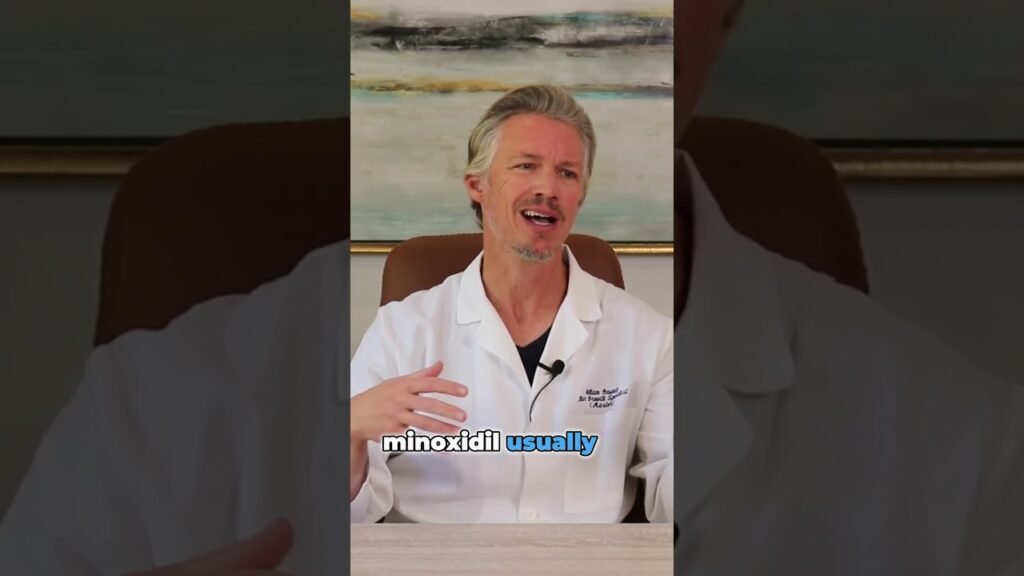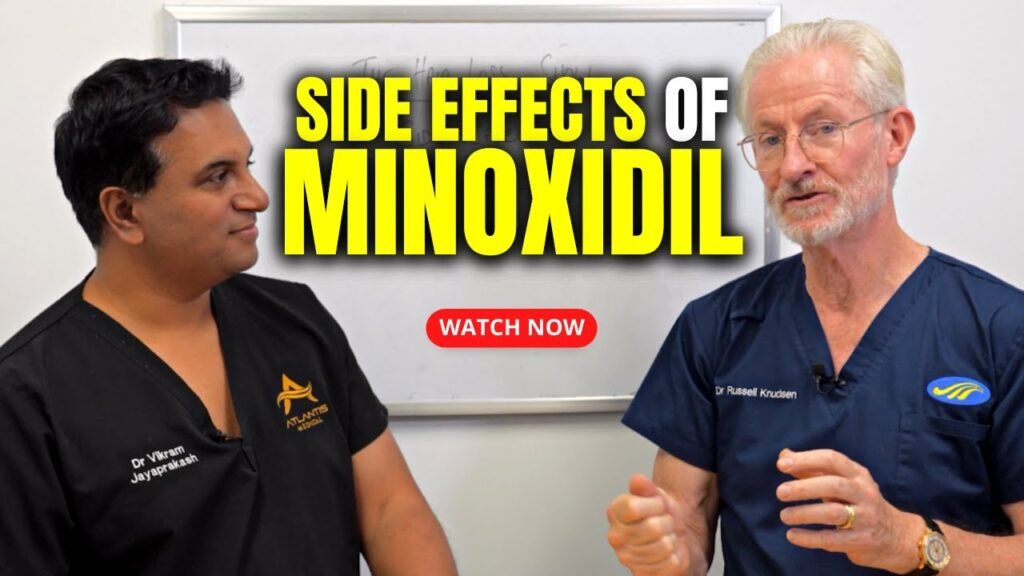What is Minoxidil and How Does it Work?
Minoxidil is a topical medication primarily used for the treatment of hair loss. Initially developed as an oral medication for high blood pressure, researchers discovered its potential for stimulating hair growth when patients reported increased hair growth as a side effect. This led to the development of minoxidil as a topical solution designed specifically to combat hair thinning and promote regrowth in individuals experiencing pattern baldness. Available in various formulations, including 2% and 5% solutions, minoxidil is applied directly to the scalp, where it works to encourage hair follicle activity.
The exact mechanism by which minoxidil stimulates hair growth is not entirely understood, but it is believed to work by prolonging the anagen phase, or the active growth phase, of hair follicles. This results in more hair follicles being in the growth phase at any given time, leading to an increase in hair density and thickness. Minoxidil is thought to enhance blood circulation to the hair follicles, providing them with more oxygen and nutrients, which are essential for healthy hair growth. Additionally, minoxidil may activate potassium channels in the hair follicle cells, contributing to its growth-promoting effects.
For best results, minoxidil should be used consistently and as directed, typically twice daily. Users may notice an initial increase in hair shedding, which is a temporary phase indicating that old hairs are making way for new growth. Its important to maintain regular application, as discontinuing use can result in a return to the previous pattern of hair loss. While minoxidil is generally safe for most users, it is crucial to follow the recommended guidelines and consult with a healthcare provider if there are any concerns about its use or potential side effects.
Can Minoxidil Cause Chest Pain?
Minoxidil, commonly used for treating hair loss, is a medication that some users have reported causing side effects, including chest pain. While the topical application of minoxidil is generally considered safe for most users, its essential to be aware of potential adverse reactions. Chest pain is a serious symptom that should not be ignored, and if experienced, its crucial to seek medical attention immediately. Understanding the connection between minoxidil and chest pain can help users make informed decisions about their treatment options.
Minoxidil works by stimulating hair follicles and increasing blood flow to the scalp, but it can also affect other areas of the body. In some cases, minoxidil can lead to systemic absorption, particularly when used in higher-than-recommended doses or applied to broken skin. This absorption can cause cardiovascular effects, which may manifest as chest pain. Individuals with a history of heart problems or those taking other medications that affect blood pressure should consult their healthcare provider before using minoxidil to minimize the risk of experiencing chest pain.
Its important to recognize the symptoms that may accompany chest pain if related to minoxidil use. These can include dizziness, rapid heartbeat, or shortness of breath. If these symptoms occur, its vital to discontinue use and consult a healthcare professional to evaluate the cause. Users are encouraged to follow the recommended dosage and application guidelines to reduce the risk of side effects. For those concerned about the potential for chest pain, discussing alternative treatments with a healthcare provider can provide peace of mind and ensure safety.
Understanding the Side Effects of Minoxidil
Minoxidil is a popular topical medication primarily used for treating hair loss and promoting hair growth. While it is widely recognized for its effectiveness, users should be aware of potential side effects that can occur with its use. Understanding these side effects can help individuals make informed decisions about incorporating Minoxidil into their hair care regimen.
One of the most common side effects of Minoxidil is scalp irritation. Users may experience redness, itching, or dryness in the area where the product is applied. This is often due to the alcohol or propylene glycol present in some formulations, which can cause discomfort for individuals with sensitive skin. To mitigate these issues, it is advisable to use a moisturizing shampoo and conditioner and consider switching to a Minoxidil foam, which may be less irritating for some users.
Another potential side effect is the phenomenon known as «shedding.» This temporary increase in hair loss can be alarming but is a normal part of the process as Minoxidil stimulates hair follicles to transition from the resting phase to the growth phase. During this period, older hairs may fall out to make way for new growth. It is important to continue using the product consistently, as discontinuation may lead to further hair loss.
In some cases, users may experience systemic side effects, although these are less common. These can include dizziness, headache, or unwanted facial hair growth, especially in women. It is crucial to follow the recommended dosage and application instructions to minimize the risk of these side effects. If any severe reactions occur, such as chest pain or rapid heartbeat, it is essential to seek medical attention promptly. Understanding these potential side effects ensures that users can use Minoxidil safely and effectively.
What to Do if You Experience Chest Pain from Minoxidil
Experiencing chest pain while using Minoxidil can be alarming and should not be ignored. The first step is to immediately stop using the product and assess the severity of your symptoms. Minoxidil, a common treatment for hair loss, can sometimes lead to side effects, including chest pain, which might indicate a serious reaction. Its crucial to determine whether the pain is accompanied by other symptoms such as shortness of breath, dizziness, or swelling, as these could be signs of a more severe condition.
Consult a Healthcare Professional
Once you have stopped using Minoxidil, the next essential step is to consult a healthcare professional as soon as possible. Contact your doctor or visit an emergency room to discuss your symptoms in detail. Be prepared to provide information about your dosage, how long youve been using Minoxidil, and any other medications you are taking. This will help the healthcare provider assess whether Minoxidil is the cause of your chest pain and determine the best course of action.
Consider Alternative Treatments
If Minoxidil is identified as the cause of your chest pain, your healthcare provider may recommend discontinuing its use permanently. They might suggest alternative treatments for hair loss that do not pose a risk to your cardiovascular health. Options may include topical treatments without Minoxidil, prescription medications, or even lifestyle changes that can promote hair growth. Always follow your healthcare providers advice and ensure that any new treatment is safe and suitable for your individual health needs.
Consulting Your Doctor About Minoxidil and Chest Pain
When considering the use of Minoxidil for hair loss treatment, its crucial to consult your doctor, especially if you experience any adverse effects like chest pain. Chest pain is a serious symptom that should never be ignored, as it may indicate a severe reaction to Minoxidil or other underlying health issues. Discussing your complete medical history with your healthcare provider can help determine whether Minoxidil is a safe option for you.
Before starting Minoxidil, inform your doctor about any pre-existing cardiovascular conditions. These conditions could potentially exacerbate side effects such as chest pain. Your doctor may suggest alternative treatments or adjust the dosage to minimize risks. Additionally, if you have a history of heart disease, hypertension, or other related health concerns, a thorough examination may be necessary to ensure that Minoxidil wont interfere with your current health status.
If you experience chest pain after starting Minoxidil, its imperative to seek medical advice immediately. Your doctor will likely perform a series of diagnostic tests to rule out any serious conditions. They may ask questions about the nature and intensity of the pain, as well as any other symptoms you might be experiencing. This information is vital for your doctor to determine whether the chest pain is related to Minoxidil or if another medical issue is at play.


